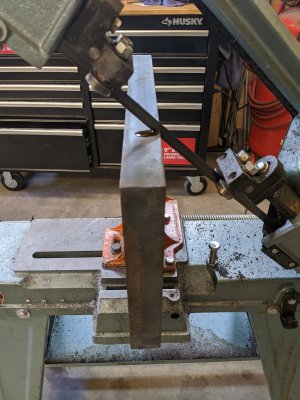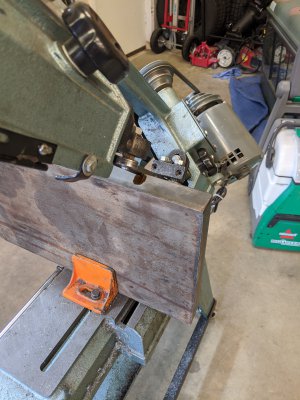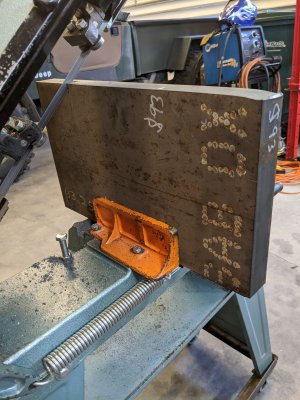My Google-fu has not been fruitful in trying to answer this question.
Some background / My situation:
I'm brand spanking new to machining (it evolved out of other maker hobbies). I live in a condo without a garage and have been slowly evolving a guest bedroom into a maker space which now, thanks to the very recent addition of a bench-top milling machine (I'm also planning on adding a lathe sometime next year), is putting on airs of becoming a small machine shop. I envision working with stock that is at least 8"-10" wide / round. I don't think I'm really going to have room for a horizontal band saw (although, if its really the only viable solution, I'll find a way to make it work). I also have access to a local makerspace organization that does have a big bandsaw (but it's an hour drive away). I've read and liked the advice in other threads on this forum about the idea of portaband saws with table adapters for folks with limited space. This looks promising for my situation, except for the limited cutting envelope.
My Question:
Is it viable to cut large metal stock in multiple passes (i.e. starting the cut on one side, then flipping it over and finishing the cut from the other side). As mentioned, I'll have a mill and a lathe to make the final cut look pretty. In my mind, this should be viable (especially if you are using a fence or other such jig), but I wanted to know if there were any gotchas or special safety concerns when cutting metal in this fashion. I'm especially curious if cutting large diameter round tube stock can safely be done by making a cut, rotating the stock, making a second cut, rotating the stock, etc..
Thanks, everyone. Any advice, warnings, alternative approaches will be greatly appreciated.
Some background / My situation:
I'm brand spanking new to machining (it evolved out of other maker hobbies). I live in a condo without a garage and have been slowly evolving a guest bedroom into a maker space which now, thanks to the very recent addition of a bench-top milling machine (I'm also planning on adding a lathe sometime next year), is putting on airs of becoming a small machine shop. I envision working with stock that is at least 8"-10" wide / round. I don't think I'm really going to have room for a horizontal band saw (although, if its really the only viable solution, I'll find a way to make it work). I also have access to a local makerspace organization that does have a big bandsaw (but it's an hour drive away). I've read and liked the advice in other threads on this forum about the idea of portaband saws with table adapters for folks with limited space. This looks promising for my situation, except for the limited cutting envelope.
My Question:
Is it viable to cut large metal stock in multiple passes (i.e. starting the cut on one side, then flipping it over and finishing the cut from the other side). As mentioned, I'll have a mill and a lathe to make the final cut look pretty. In my mind, this should be viable (especially if you are using a fence or other such jig), but I wanted to know if there were any gotchas or special safety concerns when cutting metal in this fashion. I'm especially curious if cutting large diameter round tube stock can safely be done by making a cut, rotating the stock, making a second cut, rotating the stock, etc..
Thanks, everyone. Any advice, warnings, alternative approaches will be greatly appreciated.
Last edited:




